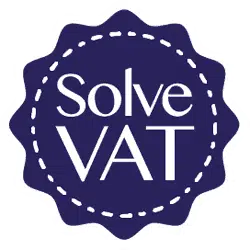VAT registration cancellation
VAT registration cancellation
UK VAT-registered businesses may be required to deregister from VAT when it ceases to make taxable supplies and, furthermore, businesses can deregister voluntarily should the value of taxable supplies made fall below the deregistration threshold of £88,000, as at 1 April 2024. Whether you are obligated to deregister or seek to deregister voluntarily, you must notify HM Revenue & Customs (HMRC) by filling out form VAT7, providing all the relevant information they need to handle your cancellation request.
Form VAT7 can be found at https://www.tax.service.gov.uk/guidance/cancel-your-vat-registration/start/cancelling-vat
Alternatively, VAT deregistration can be sought via the businesses’ government gateway account.
Below, the VAT experts at SolveVAT outline the steps you must follow once you have deregistered for VAT, and if you should expect to pay back VAT on certain assets.
The day of VAT deregistration
If you cancel your registration voluntarily, you must inform HMRC of the date on which you want your VAT registration to end. This will either be the day they receive your request or a later agreed date. Until HMRC certifies they have cancelled your registration, you should keep charging and accounting for VAT in the normal way. You must continue collecting and recording VAT if HMRC rejects your request for VAT deregistration.
If at any point in the future, you exceed the VAT registration threshold of £90,000, as at 1 April 2024, you must immediately contact HMRC with a view to registering for VAT. Failure to register on time will result in VAT penalties.
Working out the final VAT return
On confirmation of VAT deregistration, you will be required to submit a final VAT return covering the period up to the date registration ceases to be effective. Within this return, any VAT incurred on goods used in making taxable supplies, which are still on hand on the date of de-registration, may have to be paid back to HMRC. This is known as making a deemed supply.
To work out the VAT owed, you will need to assess the relevant assets – this includes interests in land (on which the option to tax has been made) or tangible goods such as unsold stock, on which VAT has been recovered. Output VAT will need to be accounted for on these items calculated at the value you would anticipate paying for them in their current condition. If you cannot work this out, use the price you would anticipate paying for the same or comparable property or items.
You must account for any stock and other assets you have on this date if both of the following apply:
- you reclaimed or could have reclaimed VAT when you bought the assets
- the total VAT due on these assets is over £1,000
It is important not to understate the amount of VAT that is owed on your final VAT return as doing so may result in the application of penalties.
You will need to keep all VAT records for 6 years from the date of cancellation.
For tailored VAT registration cancellation guidance, call us on 0161 883 2120.
Your VAT registration cancelled
It can be an unwelcome situation if HMRC make the unliateral decision to cancel the VAT registration of a business. It is implicit that deregistration of a taxable person who is making taxable supplies prevents the continuation of an economic activity. The decision prevents the taxable person from providing a tax invoice to its customer making transactions virtually impossible or excessively difficult.
This situation has been described by The TaxTribunal as HMRC exercising the “nuclear option”. Should you be facing compulsory VAT deregistration of this kind we recommend that you seek urgent VAT specialist advice.
At Solve VAT we have successfully disputed such a situation as outlined in the following link https://www.solvevat.co.uk/case-studies/vat-registration-cancellation-successfully-disputed/
HMRC – VAT registration cancellation
More details can be found at https://www.gov.uk/register-for-vat/cancel-your-registration
